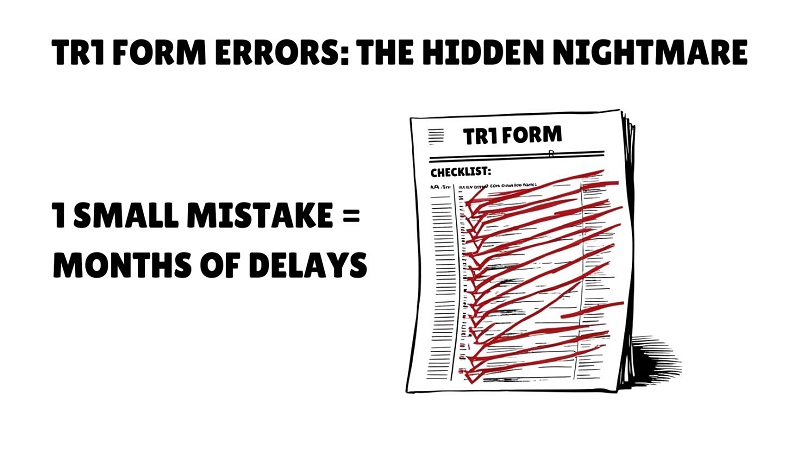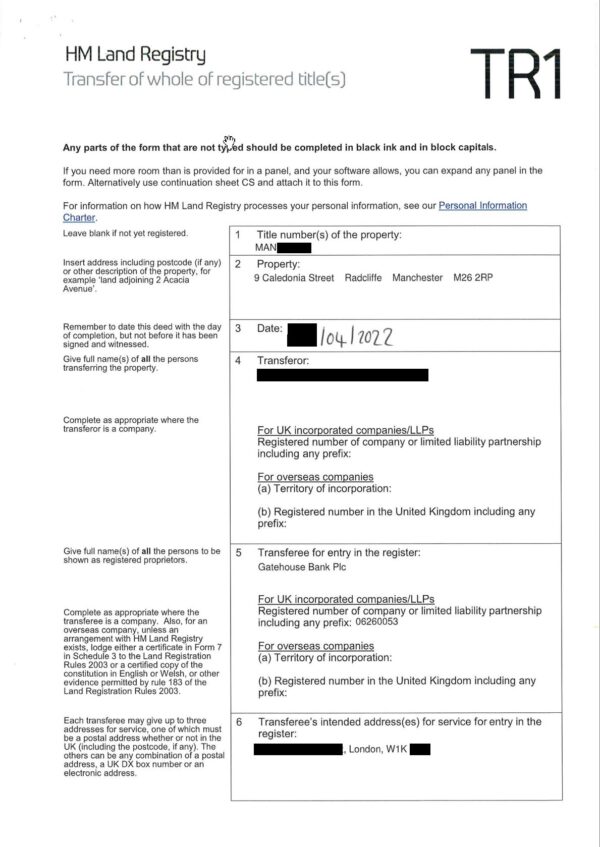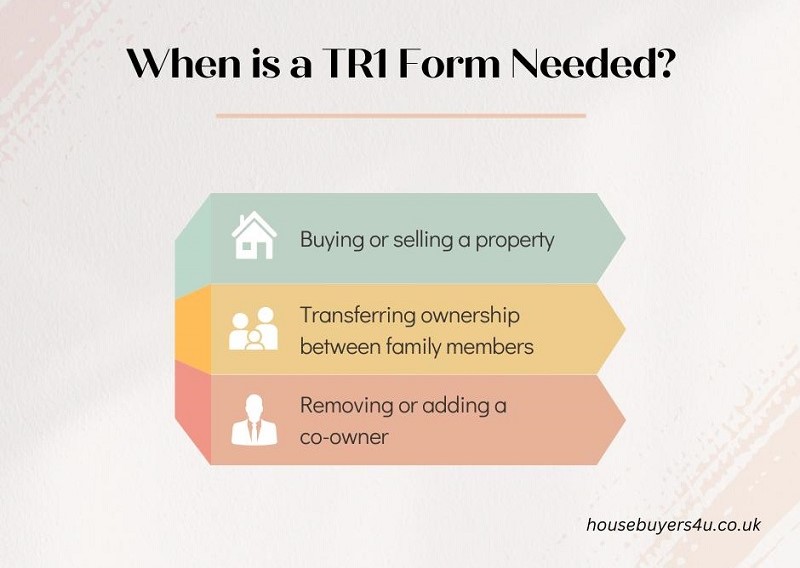What is a TR1 Form? (Avoid The #1 Cause Of Conveyancing Delays)

Key Takeaways:
- The TR1 form is used to transfer full property ownership, including sales, inheritance, or equity transfers.
- Submitting it to HM Land Registry ensures legal recognition of the new owner.
- Errors can delay registration, so using a solicitor is recommended.
What Is a TR1 Form?
A TR1 form, or Transfer of Whole of Registered Title form, is a legal document used to transfer full ownership of a property in the UK. It is a key part of the conveyancing process and must be submitted to HM Land Registry to legally record the new owner. This form is required for property sales, inheritance transfers, and changes in ownership structure.
This is what a TR1 form looks like:
Source: landtaxadvice.co.uk
What Is a TR1 Form Used For?
A TR1 form is used to legally transfer full ownership of a property in the UK. It is required in several scenarios where ownership changes hands, ensuring the transfer is properly documented and legally recognised by HM Land Registry.
When Is a TR1 Form Needed?
You will need a TR1 form in the following situations:
- Buying or selling a property – The form is completed as part of the conveyancing process to officially transfer ownership from the seller to the buyer.
- Transferring ownership between family members – Used in cases of inheritance or gifting a property.
- Removing or adding a co-owner – Common in divorce settlements or when a joint owner is added or removed from the title.
Once the form is signed, witnessed, and submitted, Land Registry updates the official records, confirming the new legal owner of the property.
Related Read: The conveyancing process for homeowners selling a house
What Is a TR1 Form in Conveyancing?
In conveyancing, the TR1 form is a important legal document used to complete the transfer of property ownership. It ensures that the new owner is officially recorded and that the transaction meets all legal requirements. While it is possible to complete the form independently, most buyers and sellers rely on a conveyancer or solicitor to handle the process correctly.
Key Steps in the Conveyancing Process
- Drafting & Signing: The conveyancer prepares the TR1 form, ensuring all details are accurate before both the buyer and seller sign it.
- Witnessing: Each signature must be independently witnessed by someone who is not involved in the transaction.
- Submission to HM Land Registry: The completed TR1 form, along with supporting documents (such as the Stamp Duty confirmation), is sent to HM Land Registry.
- Ownership Update: Once processed, HM Land Registry updates the title register, officially recording the new owner.
This process ensures a legally binding transfer of ownership, preventing disputes or complications in the future.
At Housebuyers4u, our conveyancing team has helped thousands of homeowners navigate the TR1 form process efficiently. Paul, our property expert, shares this key advice:
"Many homeowners don’t realise how crucial accuracy is when filling out a TR1 form. A simple mistake—like incorrect buyer details or missing signatures—can cause serious delays with HM Land Registry.
From our experience, working with a conveyancer who knows the process inside out ensures the form is submitted correctly the first time, preventing costly setbacks."
According to Law Gazette 20% of HM Land Registry applications require requisitions due to errors, causing delays of months. Common mistakes include incorrect details, mismatched names, and missing signatures - that's why it's very important to fill this in correctly to save time and hassle in the future.


